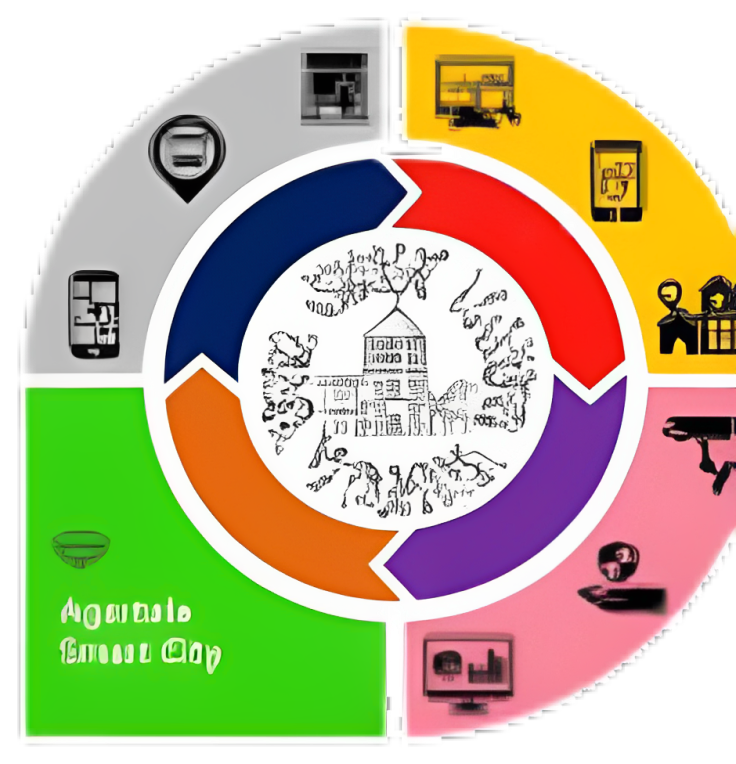Home » Aboutus
About Agartala
Agartala is the capital city of Tripura. It’s a small, but beautiful state located in the northeastern region of India. It is believed and further supported by many references that the name Agartala was derived from the words ‘Agar' and 'Tala', a mention to the density of Agarwood trees in the region. Situated on the banks of Howrah river, Agartala is just a few kilometers away from the geographical border of Bangladesh. Agartala entices the excursionists and sightseers with its past splendor. ‘Agar’ in Agartala is also referred in the context of great king Raghu, who tied up his elephant’s feet with Agar tree on the banks of Lauhitya. One of the earliest kings of Agartala was Patardan in B.C. 1900. It was the time long before the Manikya Dynasties. Chitrarath, Drikpati, Dharmapha, LoknathJivandharan have been the prominent kings in Agartala. In 1660, Maharaja Krishna Manikya (1748-1783) shifted the capital of Tripura from Udaipur to Old Agartala. Later, King Krishna Kishore Manikya (1830-1849) shifted his capital from Old Agartala to present day Agartala. Considered to be one of the oldest municipal bodies in India, Agartala Municipality was established by Birchandra Manikya in 1871. In the year 1936-37, the ruling king of the state prepared a Masterplan for Agartala which is said to be one of the first modern concepts of urban planning.
What is a Smart City?
The first question is what is meant by a ‘smart city’. The answer is, there is no universally accepted definition of a smart city. It means different things to different people. The conceptualization of smart city, therefore, varies from city to city and country to country, depending on the level of development, willingness to change and reform, resources and aspirations of the city residents. A smart city would have a different connotation in India than, say, Europe. Even in India, there is no one way of defining a smart city. Some definitional boundaries are required to guide cities in the mission. In the imagination of any city dweller in India, the picture of a smart city contains a wish list of infrastructure and services that describes his or her level of aspiration. To provide for the aspirations and needs of the citizens, urban planners ideally aims at developing the entire urban eco-system, which is represented by the four pillars of comprehensive development-institutional, physical, social and economic infrastructure. This can be a long term goal and cities can work towards developing such comprehensive infrastructure incrementally, adding on layers of ‘smartness’.
Smart City selection of Agartala
The Smart Cities Mission is an urban renewal and retrofitting program by the Government of India with an aim to develop 100 cities across the country making them citizen friendly and sustainable. Agartala was selected in the second round of Smart Cities Mission. Agartala got selected as a smart city based on the smart cities challenge, where it competed with several other cities in a countrywide competition to obtain the benefits from this mission.
Vision
To become one of the most livable cities of India by improving mobility and provide inclusive, sustainable and safe environment for social and economic development.
Strategy
Based on the SWOT Analysis Agartala Smart City Limited (ASCL) has come with the below objectives and strategies:
Objectives
• Overall improvement in existing infrastructure.
• De-congestion of most congested central and east zone of city.
• Improved public realm of the city.
• Strengthened eco-tourism in the city.
• ICT based applications.
• Proper parking policy with ICT based solutions.
• Introduce prudent planning practices and sustainable development.
Projects
Smart city projects are strategically divided into two broad components:
• Area Based Development (ABD)
• PAN city projects
Area Based Development Projects:: The area based interventions are to be limited to a specified area and are to be viewed as the template for a larger rollout of smart city interventions.
Pan City: Pan-city development envisages application of selected smart solutions to the existing citywide infrastructure. It includes basic interventions involving the use of technology, information and data that are required across the city to embark on the transformation journey.

